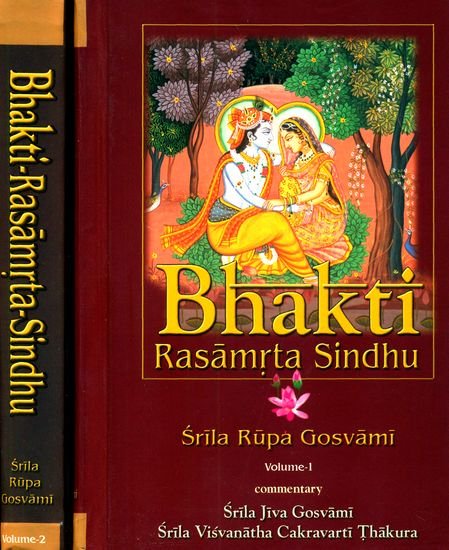Bhakti-rasamrta-sindhu
by Śrīla Rūpa Gosvāmī | 180,912 words
The English translation of the Sri Bhakti-rasamrta-sindhu verse 2.1.369; a medieval era Sanskrit book, written by Rupa Goswami (fl. 15th century) which represents a devotional (bhakti) masterpiece. In this work Goswami describes the nature and different forms of pure love (rasa) as well as various other topics on Vaishnavism and devotion.
Verse 2.1.369
Sanskrit text, Unicode transliteration and English translation:
वंशी —
अर्धाङ्गुलान्तरोन्मानं तारादि-विवराष्टकम् ।
ततः सार्धाङ्गुलाद् यत्र मुख-रन्ध्रं तथाङ्गुलम् ॥२.१.३६८॥
शिरो वेदाङ्गुलं पुच्छं त्र्य्-अङ्गुलं सा तु वंशिका ।
नव-रन्ध्रा स्मृता सप्त-दशाङ्गुल-मिता बुधैः ॥२.१.३६९॥vaṃśī —
ardhāṅgulāntaronmānaṃ tārādi-vivarāṣṭakam |
tataḥ sārdhāṅgulād yatra mukha-randhraṃ tathāṅgulam ||2.1.368||
śiro vedāṅgulaṃ pucchaṃ try-aṅgulaṃ sā tu vaṃśikā |
nava-randhrā smṛtā sapta-daśāṅgula-mitā budhaiḥ ||2.1.369||
English translation
“The vaṃsikā is seventeen fingers long (12.75 inches) with nine holes. Eight holes for playing notes are half a finger in diameter and spaced half a finger apart. A hole for blowing is placed 1-1/2 fingers from the eighth hole and is one finger in diameter. There are four fingers space remaining at the head of the flute and three fingers space remaining at the end of the flute.”
